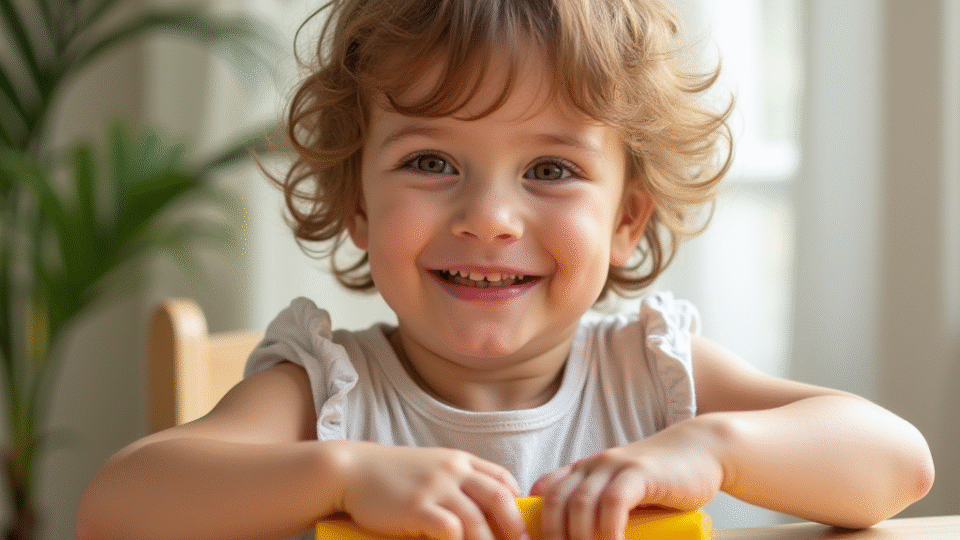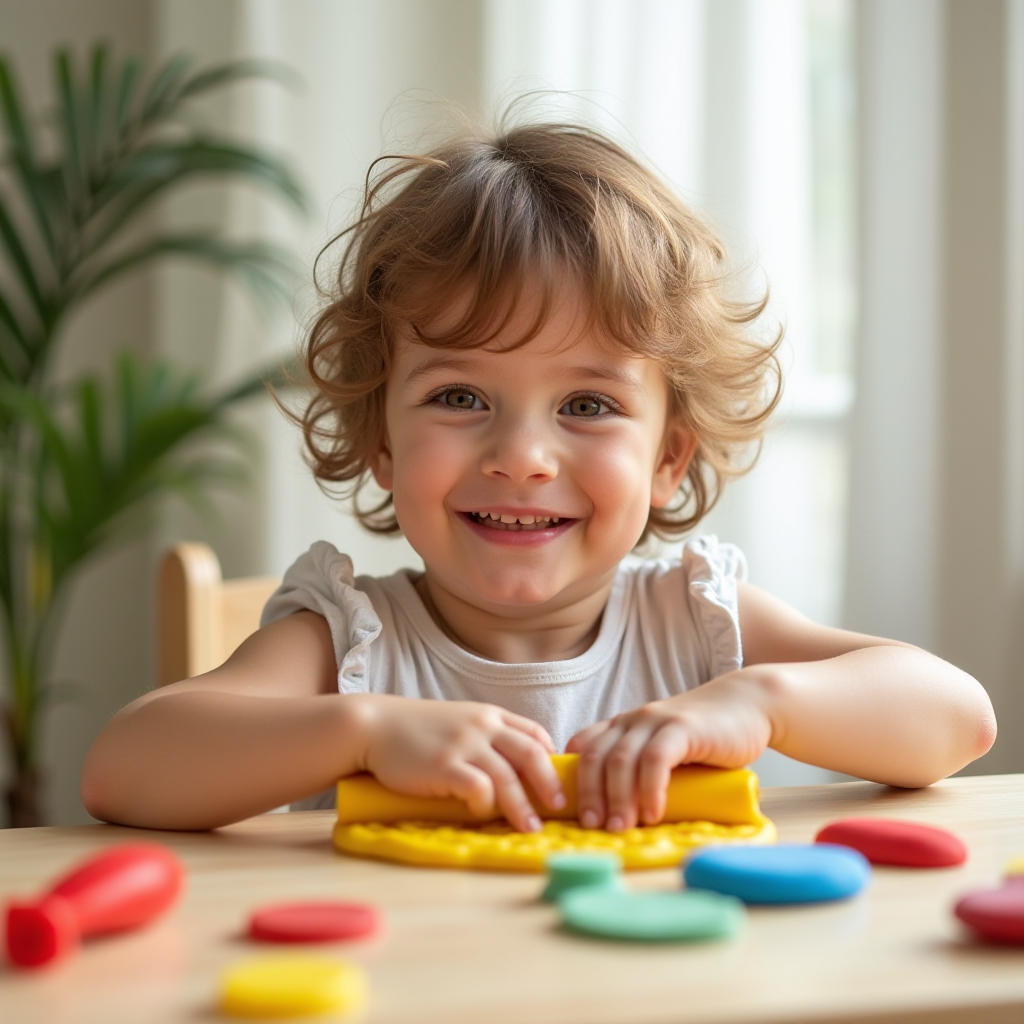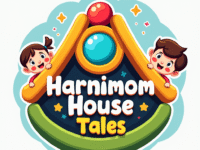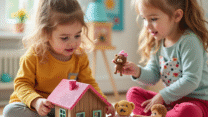
Sensory Toys for Toddlers: Engaging Little Minds Through Play
Toddlers learn best through their senses. At age two or three, every sight, sound, touch, taste, and smell teaches them something new. That’s why sensory toys are more than just fun—they’re powerful tools for development.
As a parent, I’ve noticed how sensory play keeps toddlers calm, curious, and focused. Whether it’s squishing playdough, pouring sand, or exploring textures, sensory toys offer endless opportunities for discovery. In this post, we’ll explore why sensory toys matter, which ones are best for toddlers, and how you can set up simple sensory play at home.

Why Sensory Toys Are Important for Toddlers
During the toddler years, children are wiring their brains through exploration. Sensory play gives them hands-on experiences that strengthen:
- Fine motor skills – Scooping, pinching, and squeezing improve hand strength and coordination.
- Language development – Talking about textures, colors, and actions adds new words to their vocabulary.
- Cognitive skills – Sorting, comparing, and experimenting with cause and effect builds problem-solving.
- Emotional regulation – Sensory play can be calming for overwhelmed toddlers, offering comfort and focus.
I touched on this in my earlier post on Educational Toys for 2-Year-Olds, where sensory toys stood out as a top way to combine learning with fun.
Best Sensory Toys for Toddlers
Not all toys are created equal. The best sensory toys invite toddlers to explore with multiple senses while keeping play safe and engaging. Here are some of my favorites:
1. Playdough and Clay
Soft, moldable dough is a classic sensory toy. Toddlers can roll, pinch, and shape it into anything they imagine. Adding safe tools like rollers and cutters enhances the experience.
Playdough is often a big hit when choosing Perfect Birthday Gifts for Toddlers, because it’s affordable, versatile, and loved by all ages.
2. Kinetic Sand
Unlike regular sand, kinetic sand sticks together and moves in fascinating ways. Toddlers can scoop, pour, and mold it without the big mess of a sandbox.
For families who enjoy outdoor fun—sand and water play are perfect outdoor sensory experiences.
3. Water Play Tables
Water tables allow toddlers to scoop, pour, and splash. Adding cups, funnels, and floating toys makes water play both soothing and stimulating.
4. Sensory Bins
A sensory bin is simply a container filled with rice, beans, pasta, or pom-poms. Hide small toys inside and let your toddler dig and discover.
I also included sensory bins in my guide to Stocking Stuffers for Toddlers, since smaller versions make affordable gifts.
5. Musical Instruments
Simple instruments like shakers, drums, or xylophones engage both hearing and movement. Toddlers love experimenting with rhythm while improving coordination.
6. Textured Balls and Toys
Toys with bumpy, squishy, or ridged surfaces invite touch exploration. They’re also great for rolling, catching, and squeezing.
7. Bubble Machines
Bubbles captivate toddlers with their shimmering colors and floating motion. Chasing and popping bubbles strengthens motor skills while sparking joy.
Simple Sensory Play Ideas at Home
You don’t always need store-bought toys to create sensory experiences. Everyday household items can turn into engaging play activities:
- Rice pouring station – Give your toddler cups, spoons, and a bin of rice.
- Foam fun – Whip up a bowl of soapy foam and let them scoop and swirl.
- Nature tray – Collect leaves, rocks, and flowers for your toddler to explore.
- Homemade playdough – Mix flour, salt, and water for a quick sensory activity.
- Ice exploration – Freeze small toys in ice cubes and let your toddler “rescue” them.
These simple setups make playtime exciting without needing expensive equipment.
How Sensory Toys Help with Behavior
One thing I’ve noticed as a parent is how sensory play can prevent meltdowns. When toddlers are overwhelmed, sensory toys like stress balls or kinetic sand give them a calming outlet.
In my big guide, Best Toy for 2-Year-Olds in 2025, I mentioned how many sensory toys double as emotional tools—helping little ones handle big feelings in healthy ways.
Tips for Choosing the Right Sensory Toys
When picking sensory toys for toddlers, keep these in mind:
- Safety first – Avoid small parts that could be choking hazards.
- Washability – Choose toys that are easy to clean.
- Durability – Toddlers play rough, so sturdy materials are best.
- Open-ended play – Pick toys that can be used in multiple ways.
- Age-appropriateness – Make sure toys are designed for toddlers, not older kids.
For gift ideas, I shared in my Perfect Birthday Gifts for Toddlers blog how sensory toys can easily grow with a child, lasting beyond the toddler years.
Wrapping Up: Sensory Toys Bring Learning to Life
Sensory toys aren’t just about fun—they’re about building skills, calming emotions, and giving toddlers a safe way to explore their world. Whether it’s through playdough, water play, or music, these toys support growth in every area of development.
If you’re building a toy collection, don’t miss my guides on Top Toddler Toys for 2-Year-Olds and Educational Toys for 2-Year-Olds, where I highlight more play ideas that combine fun and learning. And with holidays and birthdays always around the corner, you may also want to check out Stocking Stuffers for Toddlers for small but meaningful sensory toy options.
The beauty of sensory toys is that they turn everyday play into hands-on learning. And that’s exactly what toddlers need.













